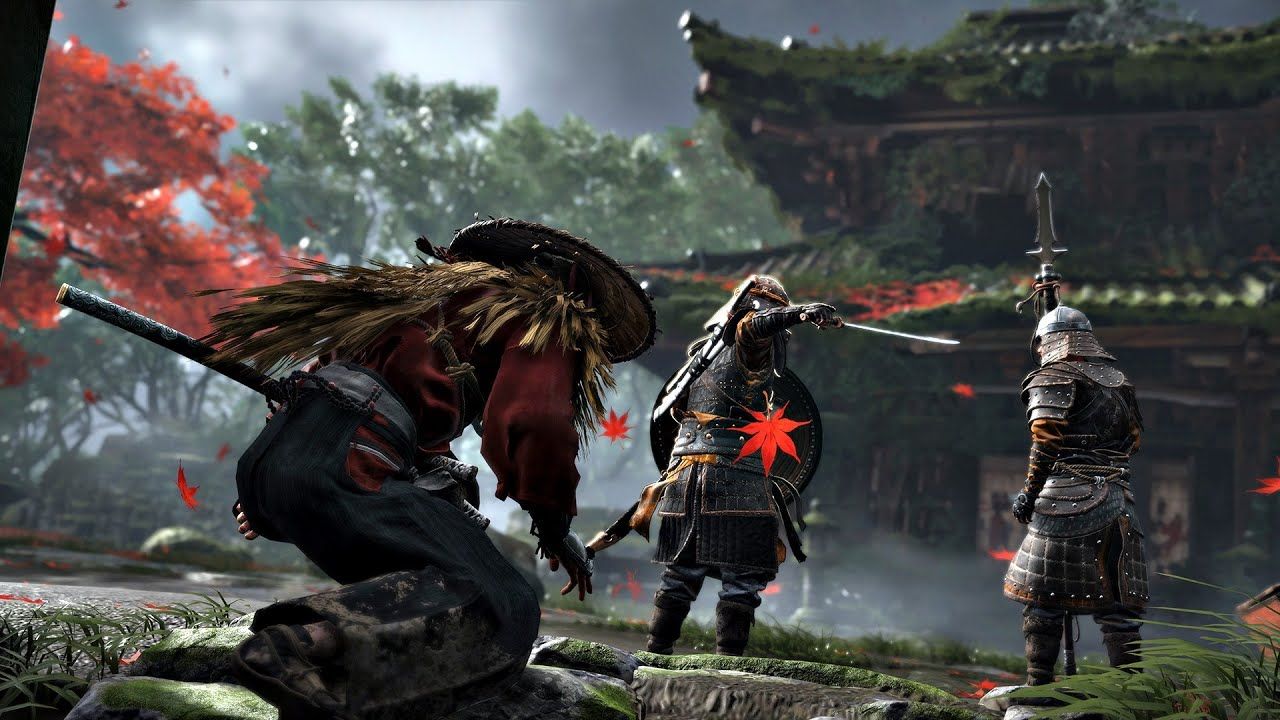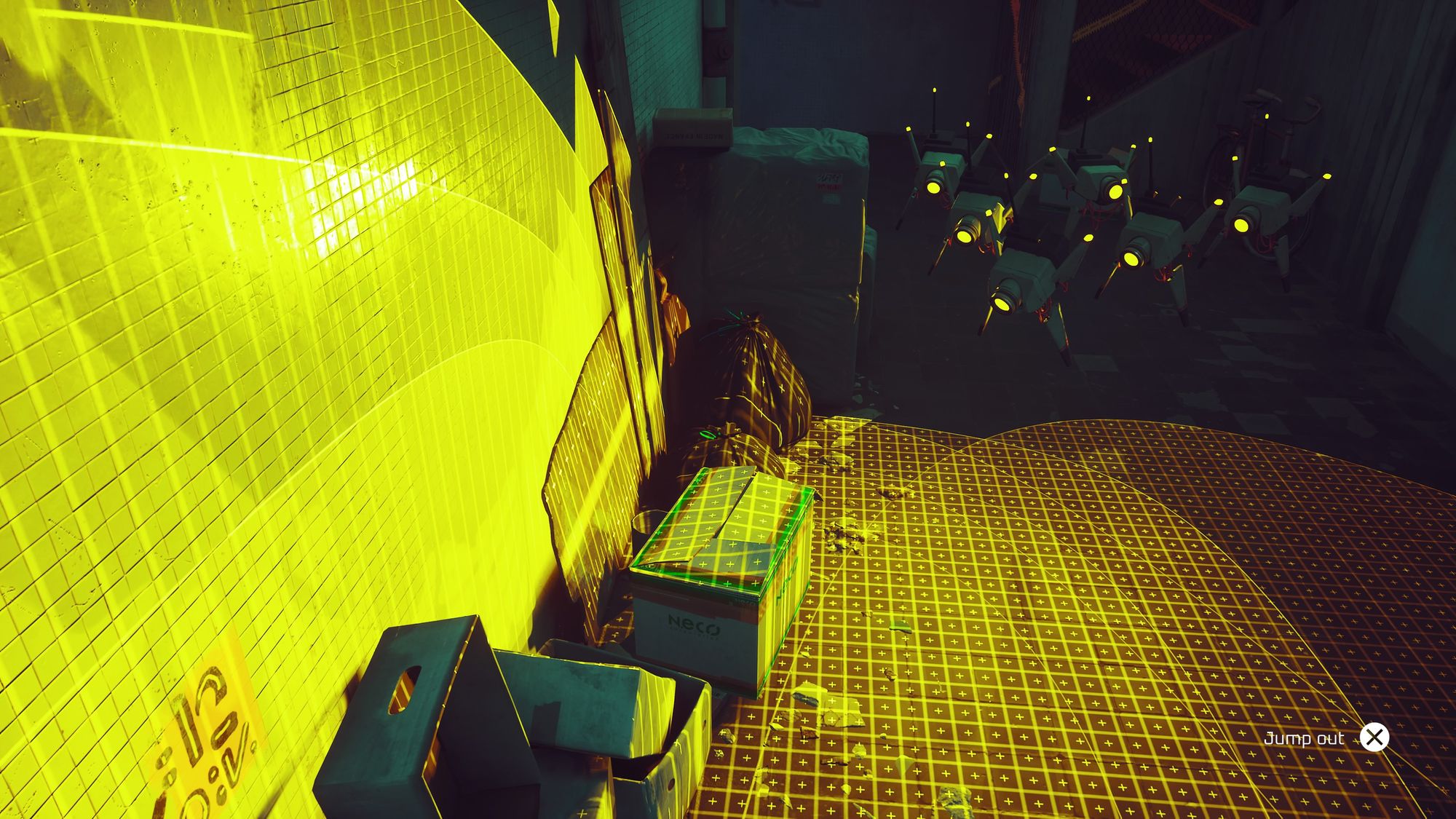I’m Giving Up on Stealth Games
What games do wrong, and right, when it comes to stealth

What do the campaigns of Horizon: Zero Dawn, and Call of Duty: Modern Warfare 2 have in common? Apart from featuring protagonists that are more durable than your average human, they are both games that I promptly shelved and vowed not to play again.
The reason for uninstalling these games is quite simple: I abhor stealth in video games.
Both of the aforementioned games implement stealth differently. In Horizon: Zero Dawn (and its sequel, Horizon: Forbidden West, which I was gifted and similarly retired from playing after about three hours), the main set of enemies are mechanized fauna. Each has a specific type of weakness and generally requires a tactful approach to dismantling their armor, stripping off useful components and rendering them useless.
You certainly can rush in and tackle these enemies head-on, but the chances of nailing the pinpoint shot at its weakness (Horizon is generally built around ranged weaponry) while dodging its series of attacks are slim when compared to utilizing the game’s tailor-made stealth system.
Thanks to the protagonist Aloy’s gleaming red hair that blends in with the brunt of the world’s flora, she can hide out in the tall grass indefinitely, assuming she didn’t trigger the alarms of nearby machines before hunkering down.

But despite the intentionally built stealth system, which features enemy tracking mechanics and other helpful options like creating traps, I can never seem to get a hang of it in a way that makes combat effortless and fun.
Likewise, my time with the Modern Warfare 2 campaign came to an abrupt ending on the 13th story mission, “Alone". The mission features an injured Johnny “Soap” MacTavish trying to navigate a city filled with armored enemies while equipped with nothing but DIY crafting materials and the occasional shotgun.
Until that point, the campaign was generally enjoyable, but the addition of armored enemies to a first-person stealth system prompted a swift uninstall. The situation was made worse by the introduction of a crafting system akin to The Last of Us (another stealth-heavy game from which I resigned after about 10 hours) and a horrendous checkpoint system that saw me spawn and respawn on an enemy-infested balcony Not even lowering the game's story difficulty was enough to save a mission plagued by an innumerable amount of armor-plated guards tuned to the slightest shift in the shadows.
What’s Wrong With Stealth?
I hate missing out on games due to their stealth systems, but it’s an issue I've had to come to terms with. When Metal Gear Solid 5 became free through PlayStation Plus, I made it about five minutes in before quitting, having never made it out of the hospital.
I realize stealth in games is truly an "it's not you, it's me" problem. There are plenty of gamers that enjoy the genre, so why isn't it for me?
Stealth games present a cognitive challenge. Whether the game is presented in a first or third-person view, players have to reckon with a number of variables that influence how stealth scenarios play out.

Artificial intelligence is part of the trouble. Single-player stealth games that feature computer-controlled NPCs hunting for the main character have little in the way of standardization. In some cases, enemies can be overly jumpy, attuned to even the slightest rustle in the bushes. In others they exist in a near vegetative state, unaware of the protagonist swapping weapons and crafting items (presumably) loudly in the corner. Sometimes if enough time lapses, the enemies will lose interest, effectively resetting the encounter to its original state.
I’ll admit that with enough practice, any player can learn how to beat these systems, but the barrier to entry is time. In an action-based game, like Elden Ring or Returnal, the process of learning enemy patterns and abilities is active.
Each time I fight a boss, I’m retraining my muscle memory to react to various cues. When I see Elemer of the Briar lower his shield and I’m more than a sword’s length away from him, I know that his shield charge is coming, and can plan accordingly. Eventually, identifying and mentally logging these cues becomes reactionary, which speeds up the process of toppling enemies throughout the game.
In stealth systems, however, the learning process is slower and more deliberate. If every approach runs the risk of blowing your cover, enemy observation becomes paramount. But unlike an action game, the punishment for failing an encounter isn’t another immediate stab at the scenario, but another period of waiting and watching, and in my case, more frustration.
Because stealth games rely so heavily on planning, they often also introduce puzzle elements to their ranks. In the first stage of Hitman 3 (2021), you are tasked with assassinating a target on the upper levels of a skyscraper in Dubai. There are a number of ways you can proceed, and the onus is on you to execute a winning strategy. The strategies are often layered, requiring outfit changes and timed approaches under the auspices of blending in with your surroundings. Taken with the game’s slower pacing, the challenge of Hitman becomes unbearable for players like me, who find fault in the nature of the game’s finicky systems.
But unlike traditional puzzle games, which have an explicit rule set that must be followed, the rules of stealth games are obscured and it's up to the player to determine what they are. Will I alert surrounding enemies to my presence if I kill one with an arrow? How long will it take for that enemy to return to its previous patrol (if at all)?
Stealth games (at least the good ones) are designed to keep players guessing how to tackle their challenges, and effectively create the dopamine response needed to keep players engaged. The best ones often allow players to push their systems to the limit to create rewarding scenarios, such as killing two enemies with a single bullet or completing the game as a pacifist.

Saving Grace
Despite my inability to embrace the genre, there are occasionally systems that make stealth games approachable. The quick-hack ability of Cyberpunk 2077 completely nullifies the need to prowl around enemy-infested buildings since V can infect opponents with malware at a generous range.
This is taken to extremes through the in-game camera system - closed circuit cameras installed throughout the world allow V to inflict her same set of ailments on enemies without even being in their line of sight. On more than one occasion I’ve posted V out in a parking lot while she uses CCTVs to drop an entire platoon of unsuspecting gangoons.
Conversely, other games adopt a stealth moniker despite their mechanic completely nullifying the need to proceed with caution. In Deathloop, most enemies have a fleeting attention span. Break from their line of sight and they’ll nearly revert to a pre-encounter state.
Deathloop’s stealth system is also rarely universal. Save for certain instances like alerting the Visionary Fia, who will detonate the entire game world upon discovering Cole in her hideout, alerting an enemy in one area doesn’t announce your arrival to the entire map. No matter how loud you think that shotgun is, enemies outside the view of your screen probably didn’t hear it. Immersion breaking perhaps, but it lets me skip that which I would rather not be forced to endure.
Another recent example of stealth I've enjoyed is found in Sucker Punch's Ghost of Tsushima. The game begins modestly, with players maneuvering Jin through plenty of tall grass and shadows. But by upgrading enough of the samurai-based skills, players can effectively ignore most stealth encounters in favor of brute forcing their way through enemy lines.
Perhaps the best example of stealth for gamers like me came during a playthrough of Stray, colloquially known as "that cat game". After arriving at Midtown, and stealing the atomic battery, the cat attempts to return to Clementine's home, which sits in an apartment block actively being searched by drones.
At one point, no fewer than six drones were alerted to my presence despite sitting inside of an empty cardboard box. After a few minutes of reconciling there was no hope for survival, I made a break for the exit.

Upon my arrival, all pretense of the stealth section ended. No more chasing. No more searchlights. I simply ran away from the stealth section. In that moment I felt accomplished.
In hindsight, I realized I don't want to play stealth games at all. I just want to pretend that I do.
